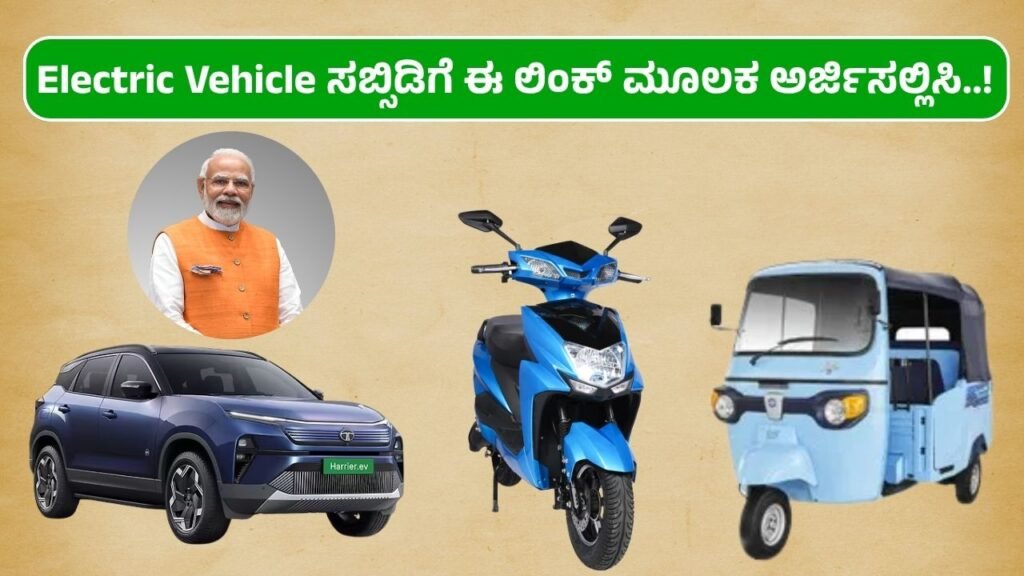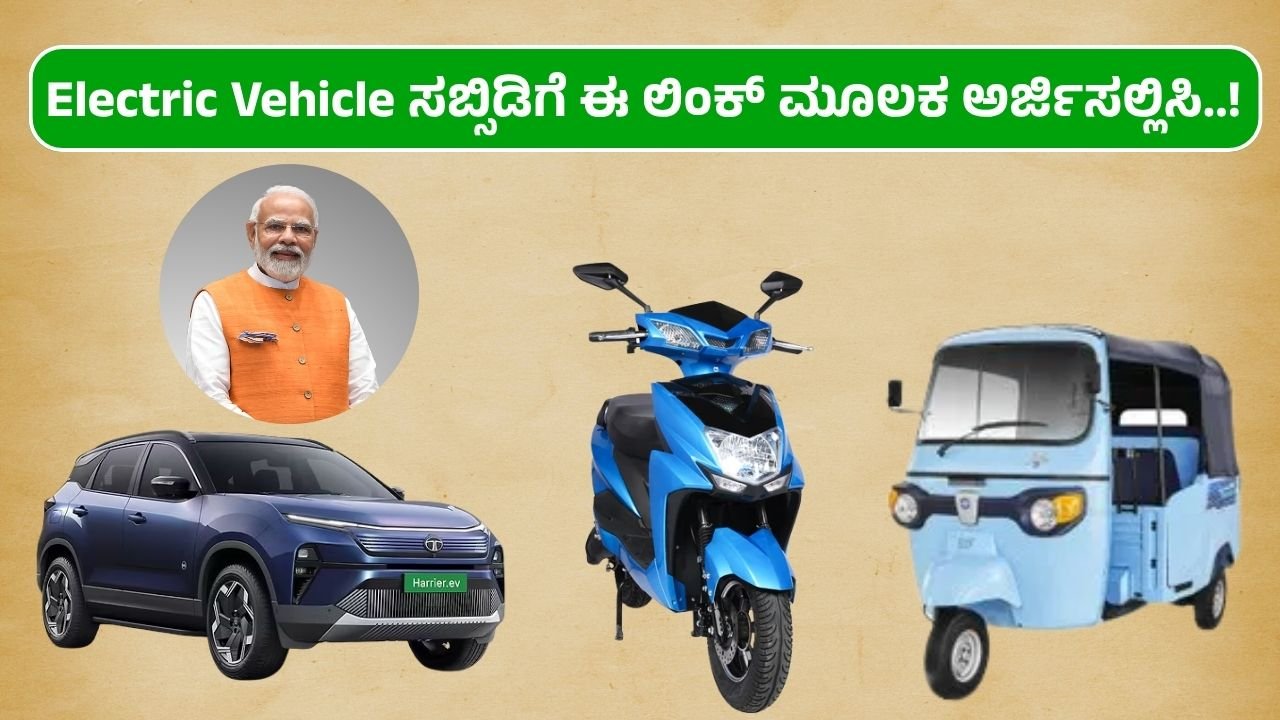Introduction:
The Prime Minister’s Electric Vehicle (PM EV) Scheme is a significant initiative launched by the Government of India to accelerate the adoption of electric vehicles (EVs) across the country. This scheme is part of India’s broader commitment to reduce carbon emissions, promote sustainable mobility, and combat climate change. With the transport sector being a major contributor to air pollution and greenhouse gas emissions, the PM EV Scheme aims to transition India towards clean and green transportation.

Objectives of the PM EV Scheme
The primary goals of the PM EV Scheme are:
- Promote the use of electric vehicles across public and private sectors.
- Reduce dependency on fossil fuels and lower oil imports.
- Curb vehicular pollution, especially in urban areas.
- Encourage domestic manufacturing of EVs, batteries, and components under the Make in India initiative.
- Create employment opportunities in the green mobility and clean energy sectors.
- Establish a robust charging infrastructure nationwide.
Key Features and Incentives
The PM EV Scheme includes a wide range of incentives and subsidies for both consumers and manufacturers:
- Subsidies for EV buyers: The government provides financial assistance to individuals purchasing electric two-wheelers, three-wheelers, and four-wheelers. These subsidies significantly lower the upfront cost of EVs, making them more affordable.
- Incentives for manufacturers: EV and battery manufacturers are offered tax benefits, reduced import duties on key components, and research grants to encourage innovation.
- Charging infrastructure development: The scheme supports the installation of public and private EV charging stations in cities, highways, and rural areas. It also promotes battery swapping technologies.
- Public transportation electrification: Special incentives are provided for electric buses, taxis, and auto-rickshaws to encourage state and municipal transport services to go electric.
- Scrappage policy alignment: The scheme aligns with the vehicle scrappage policy, offering benefits to individuals who trade in old internal combustion engine vehicles for new electric ones.
Implementation and Phases
The PM EV Scheme builds upon the earlier FAME (Faster Adoption and Manufacturing of Electric Vehicles) I & II schemes, which laid the groundwork for EV adoption in India. The PM EV Scheme is being implemented in a phased manner:
- Phase I focuses on creating awareness, initial adoption in public transport, and establishing pilot infrastructure projects.
- Phase II aims to achieve mass adoption, develop EV ecosystem supply chains, and localize EV manufacturing under the Production Linked Incentive (PLI) scheme.
- Future phases will target complete transition of specific segments (such as government fleets and delivery vehicles) to electric by 2030.
Benefits of the Scheme
The PM EV Scheme brings numerous advantages:
- Environmental sustainability: Reducing emissions helps combat climate change and improve air quality.
- Economic growth: Development of EVs and related industries boosts investment, innovation, and job creation.
- Energy security: Lowering oil imports improves India’s trade balance and strengthens energy independence.
- Health benefits: Cleaner air reduces respiratory illnesses and healthcare costs in polluted urban areas.
Challenges and the Way Forward
Despite its promise, the PM EV Scheme faces several challenges:
- High upfront costs: EVs are still more expensive than traditional vehicles, even with subsidies.
- Limited charging infrastructure: Many areas, especially rural and semi-urban, lack adequate charging stations.
- Battery production: India still relies heavily on imports for lithium-ion cells and other components.
- Consumer hesitation: Concerns about EV range, charging time, and maintenance hinder adoption.
To overcome these, the government must increase awareness, improve infrastructure, support local battery production, and provide long-term policy stability.
Conclusion
The PM EV Scheme represents a bold and necessary move toward a cleaner, greener India. By promoting electric mobility, the government is not only addressing environmental concerns but also paving the way for a future-ready transportation system. With continued support, innovation, and public-private collaboration, India can emerge as a global leader in electric mobility.
